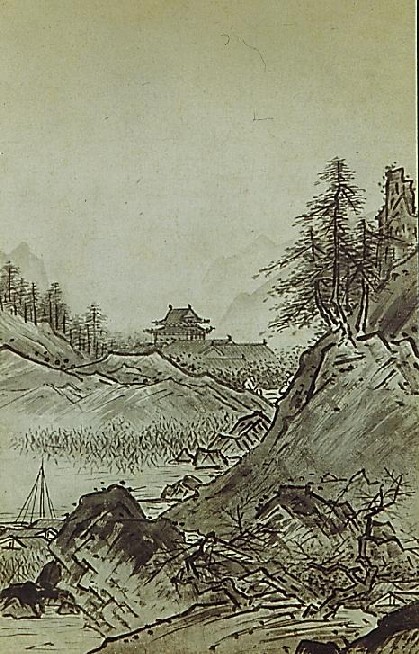| architecture |
| calligraphy |
| ceramics |
| clothing |
| comics |
| gardens |
| lacquerwork |
| literature |
| movies |
| music |
| painting |
| poetry |
| sculpture |
| tea ceremony |
| television |
| theatre |
| weaponry |
| thematic routes |
| timeline |
| the site |

|
Autumn |
context: painting > Zen painting > Artists
Sesshu Toyo 1420-1506
Sesshu is my favourite Japanese painter, probably my favourite landscape painter in the world, and arguably Japan's most revered painter, a legendary figure. When he was a novice monk at the age of 13, it is said, he neglected his religious studies in favour of art, and was tied to a post in punishment. He wept, and then drew rats in the dust with his own tears, and these drawings came to life and gnawed through his bonds to free him. I don't think this reflects an idea of Sesshu as a deeply naturalistic, realistic artist, but more as one whose work was full of some kind of life energy.
From age twenty to forty or so he was stationed at the big central Sokoku-ji temple in Kyoto. This was the greatest centre of Zen art - Josetsu had been there, and Shubun still was. He worked under Shubun, and got to study many great Chinese works - almost all of his work looked entirely Chinese throughout his career; indeed, his landscapes generally resembled Chinese terrain and not Japanese. This was reinforced when he spent about two years in China soon after his time at the Sokoku-ji. He'd been looking for great Chinese masters to learn from, but instead he was himself treated as a great artist, and was immensely proud to be given the highest seat at the Ching-te-ssu monastery in T'ien-t'ung, a fact he included in his signatures several times in the years to come. He'd never held any significant rank in his years as a monk in Japan, so this had a big effect on him.
